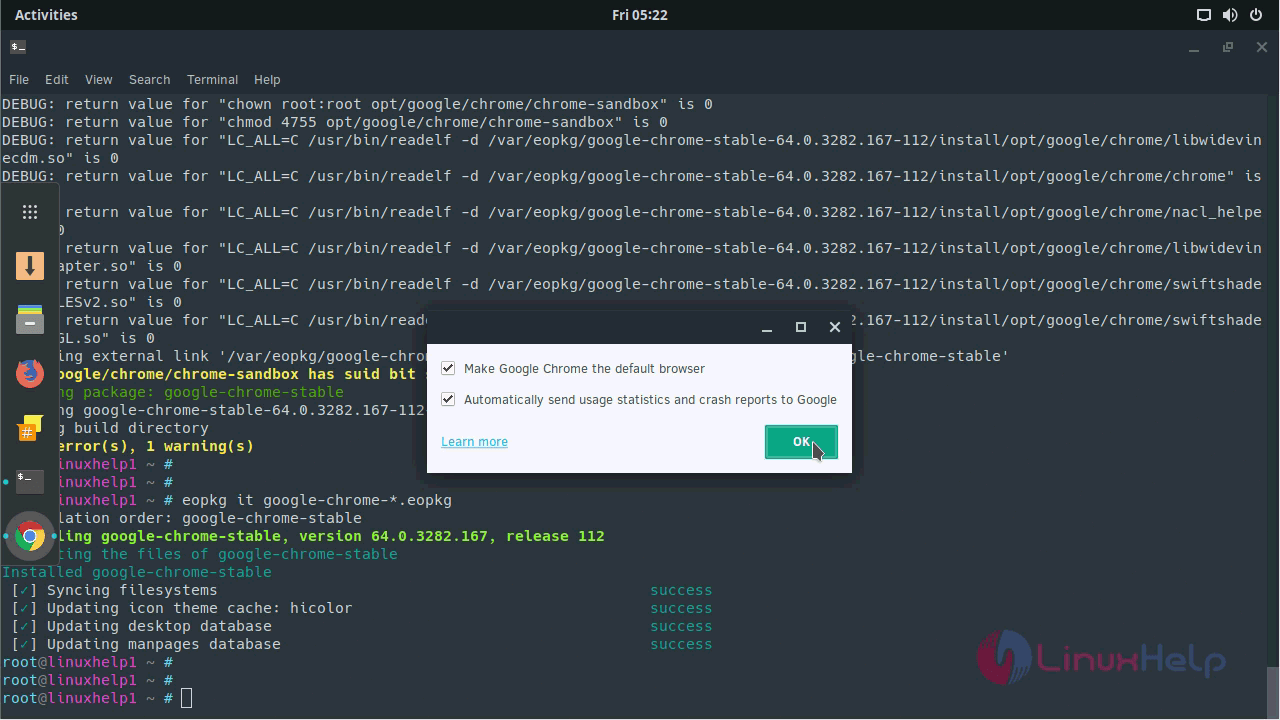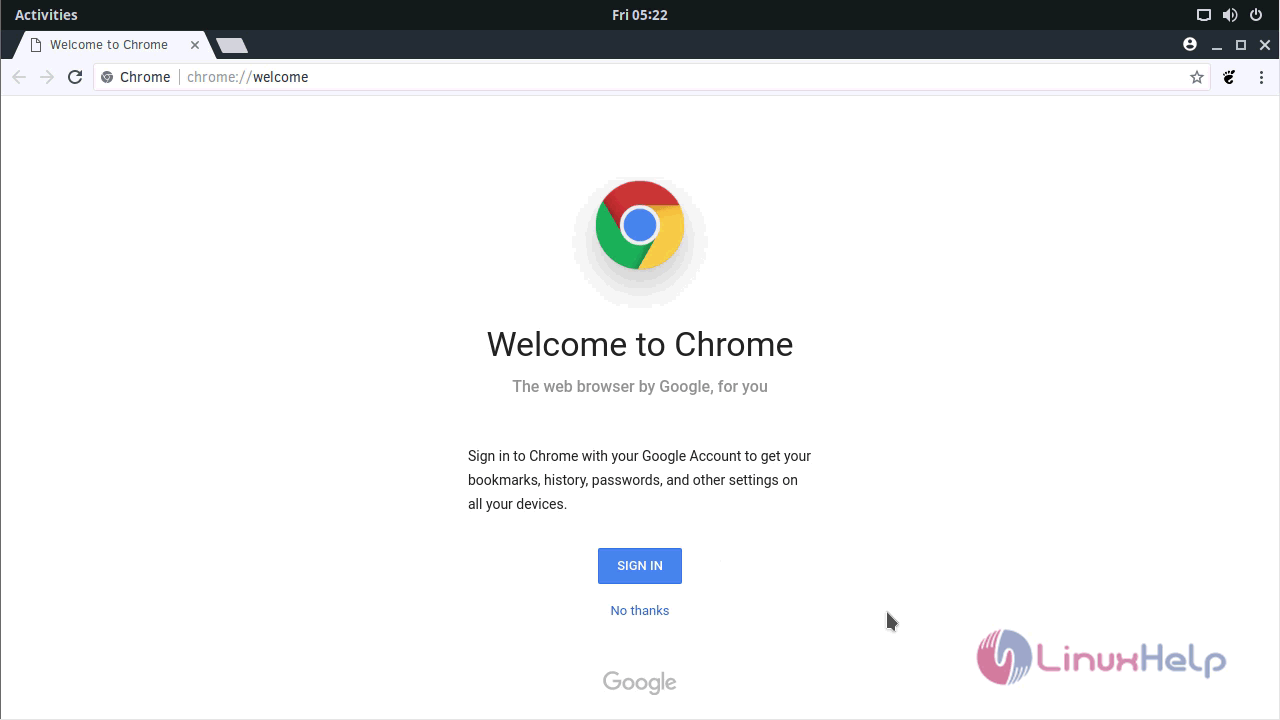How to install Google Chrome in Solus-3
To install Google Chrome, Chromium in Solus-3
Solus ships with Firefox web browser by default. Debian-based .deb and RPM binaries seen in Google Chrome’ s official download page are not compatible with Solus. Solus team has packaged the Google Chrome browser binary for you. Chromium is not yet packaged, but there is a workaround to run Chromium. In this tutorial, you will learn about the method to install and set up both on Solus 3.
Installing Google Chrome
First, make sure you update your repositories by making use of the following command.
root@linuxhelp1 ~ # eopkg update-r epo
Updating repository: Solus
eopkg-index.xml.xz.sha1sum (40.0 B)100% 206.61 KB/s [00:00:00] [complete]
Solus repository information is up-to-date.
Once it is done, make sure you download the latest version of Google Chrome by making use of following command.
root@linuxhelp1 ~ # eopkg bi --ignore-safety https://raw.githubusercontent.com/solus-project/3rd-party/master/network/web/browser/google-chrome-stable/pspec.xml
pspec.xml (32.0 KB)100% 57.22 MB/s [00:00:00] [complete]
actions.py (874.0 B)100% 14.63 MB/s [00:00:00] [complete]
DEBUG: InstallDB initialized in 0.00856900215149.
DEBUG: RepoDB initialized in 0.0001380443573.
Unsatisfied Build Dependencies: gconf binutils
DEBUG: PackageDB initialized in 0.150634050369.
Do you want to install the unsatisfied build dependencies (yes/no)y
Installing build dependencies.
DEBUG: HistoryDB initialized in 0.000433206558228.
DEBUG: PackageDB initialized in 0.116227149963.
DEBUG: RepoDB initialized in 0.000218868255615.
DEBUG: checking polkit release > = 17
DEBUG: InstallDB initialized in 0.00275301933289.
DEBUG: checking libxml2 release > = 18
DEBUG: checking glibc release > = 48
DEBUG: checking glib2 release > = 40
DEBUG: checking dbus release > = 23
DEBUG: checking dbus-glib release > = 11
DEBUG: checking binutils-libs release 30
DEBUG: checking glibc release > = 47
digraph G {
gconf[ label = " gconf(3.2.6,9)" ]
binutils[ label = " binutils(2.29.1,30)" ]
.
.
Building source...
Testing package...
Installing...
DEBUG: return value for " chown root:root opt/google/chrome/chrome-sandbox" is 0
DEBUG: return value for " chmod 4755 opt/google/chrome/chrome-sandbox" is 0
DEBUG: return value for " LC_ALL=C /usr/bin/readelf -d /var/eopkg/google-chrome-stable-64.0.3282.167-112/install/opt/google/chrome/libwidevinecdm.so" is 0
DEBUG: return value for " LC_ALL=C /usr/bin/readelf -d /var/eopkg/google-chrome-stable-64.0.3282.167-112/install/opt/google/chrome/chrome" is 0
DEBUG: return value for " LC_ALL=C /usr/bin/readelf -d /var/eopkg/google-chrome-stable-64.0.3282.167-112/install/opt/google/chrome/nacl_helper" is 0
DEBUG: return value for " LC_ALL=C /usr/bin/readelf -d /var/eopkg/google-chrome-stable-64.0.3282.167-112/install/opt/google/chrome/libwidevinecdmadapter.so" is 0
DEBUG: return value for " LC_ALL=C /usr/bin/readelf -d /var/eopkg/google-chrome-stable-64.0.3282.167-112/insta ll/opt/google/chrome/swiftshader/libGLESv2.so" is 0
DEBUG: return value for " LC_ALL=C /usr/bin/readelf -d /var/eopkg/google-chrome-stable-64.0.3282.167-112/install/opt/google/chrome/swiftshader/libEGL.so" is 0
Including external link ' /var/eopkg/google-chrome-stable-64.0.3282.167-112/install/usr/bin/google-chrome-stable'
/opt/google/chrome/chrome-sandbox has suid bit set
Building package: google-chrome-stable
Creating google-chrome-stable-64.0.3282.167-112-1-x86_64.eopkg...
Keeping build directory
Now, you shall proceed with the installation of Google Chrome by making use of the following command.
root@linuxhelp1 ~ # eopkg it google-chrome-*.eophg
Installation order: google-chrome-stable
Installing google-chrome-stable, version 64.0.3282.167, release 112
Extracting the files of google-chrome-stable
Installed google-chrome-stable
[✓] Syncing filesystems success
[✓] Updating icon theme cache: hicolor success
[✓] Updating desktop database success
[✓] Updating manpages database success
To open Solus menu

Type Google chrome in the search field.

When the chrome icon appears on your screen, click on it to open.

In the popup that appears, set your preferences and proceed.

Your Google Chrome browser is now ready to be used.

With this, the installation of Google Chrome comes to an end.
Comments ( 0 )
No comments available